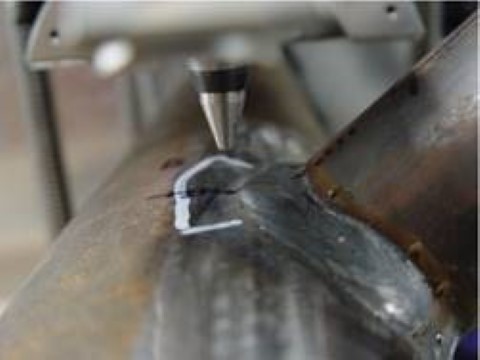Lifetime of hollow sections
Consideration of sequence effects in the service life estimation of hollow section structures
Welded hollow section structures have great economic potential due to the possibility of forming lightweight structures. Therefore, they are preferably used in commercial vehicle construction, steel construction, crane construction and agricultural machinery construction, as well as in the energy sector.
The constructions are usually made as frame or truss structures, which are often subject to fatigue stresses due to cyclic loading, which is one of the basic causes of damage to these lightweight structures.
Fatigue strengths and Wöhler lines for hollow section nodes have previously been derived from tests with single-stage collectives on low-strength steels. The transfer to realistic load collectives is then usually carried out with damage-equivalent rectangular collectives based on the simple Palmgren-Miner rule with a lumped damage sum of D=1.0, independent of material and actual collective shape.
However, this method does not take into account both favorable and unfavorable load sequence effects from real operating load collectives. Various previous studies show that the simple linear damage accumulation according to Palmgren-Miner with damage sum D=1.0 is therefore often not very applicable. Many guidelines therefore already recommend very conservative damage sums of up to D=0.5.
The object of the research project is an investigation of the influence of realistic load and stress collectives, including sequence effects, on the service life estimation of welded hollow section structures in crane and commercial vehicle construction as a function of the manufacturing conditions, component size and material. For this purpose, test-based investigations are carried out on typical hollow section structures under realistic load time series and under two-stage collectives.
The aim of the research project is to provide adjustment factors for service load collectives for known verification methods in order to improve the service life estimation of hollow section structures.
| Research field: | Structural Analysis and Integrity |
| Steel Construction, Composite Construction | |
| Responsible: | Prof. Dr.-Ing. André Dürr |
| Prof. Dr.-Ing. Klemens Rother | |
| Duration: | 01.04.2017 - 31.02.2020 |
